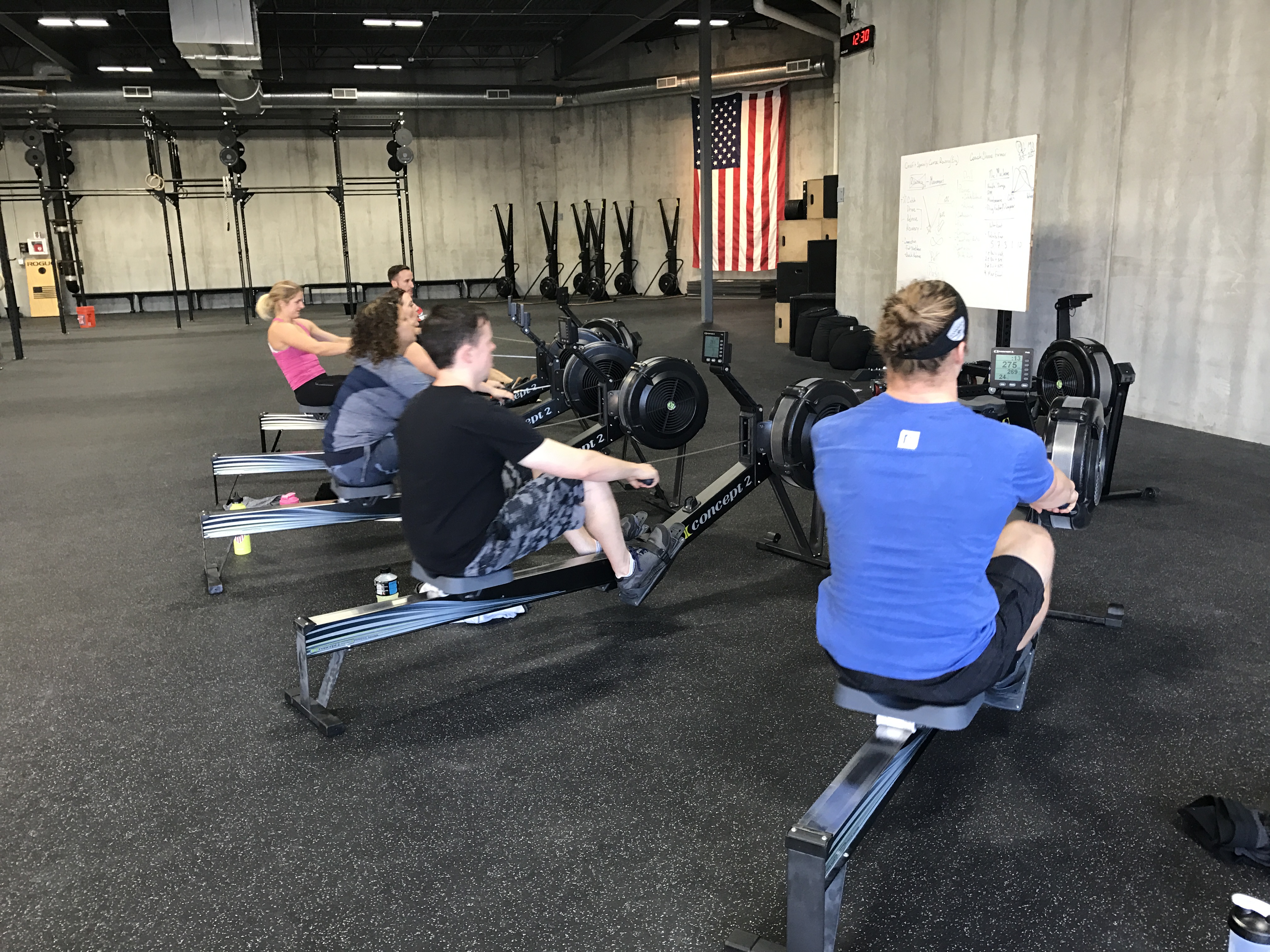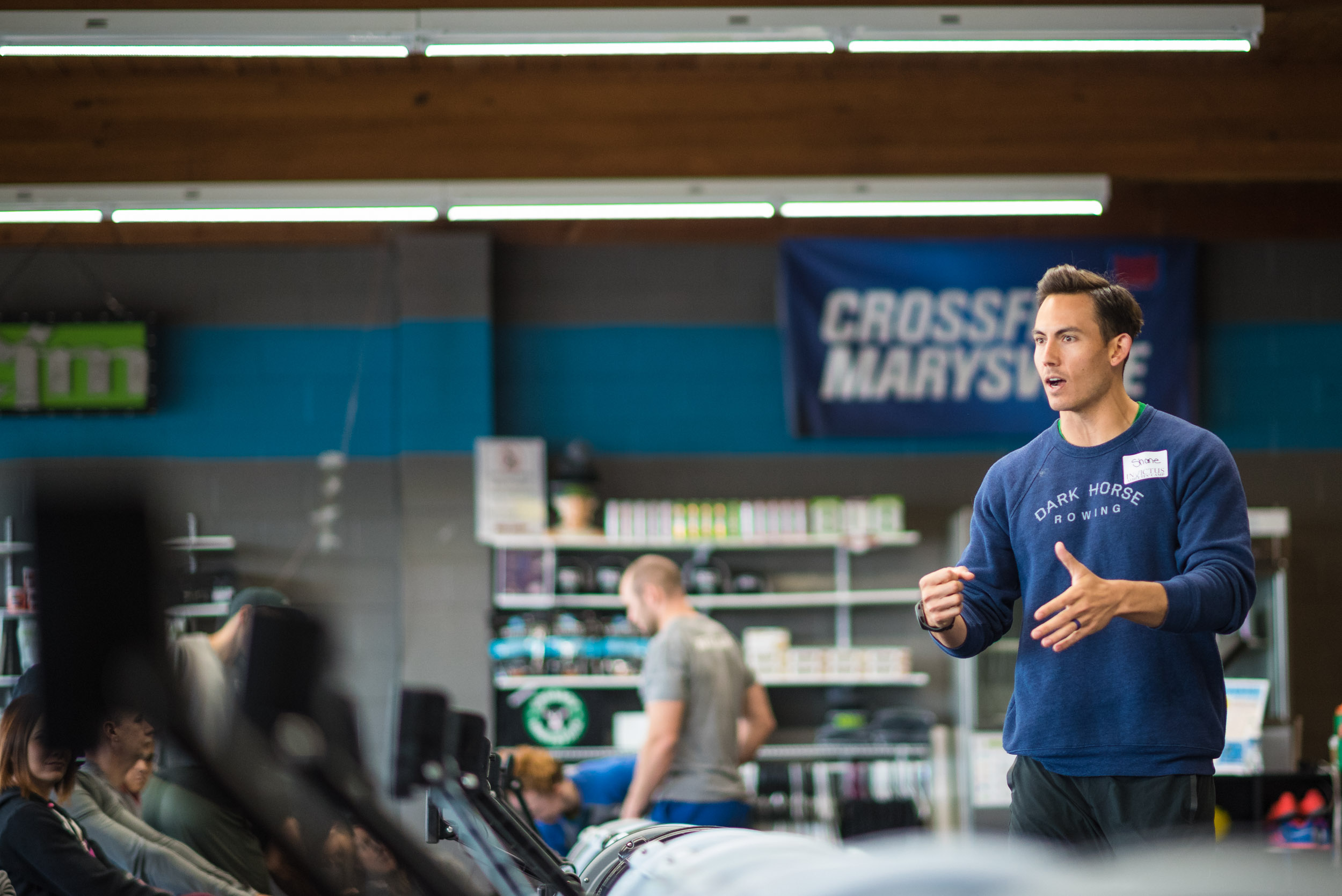
Exercise for People with Disabilities
How People with Disabilities Can Use Rowing to Train Despite Movement Limitations
As I stood there watching him row, it was like my brain was seeing rowing for the first time again. There he was grinding away at the workout, smoking some of the guys next to him but they had one supposed advantage on him…feet.
My brain was having to understand and re-think the way I’d been coaching rowing.
I was watching Logan Farr, an adaptive athlete who after an accident lost both his feet and now wears prosthetics. His approach to connecting to the Concept2 rower was different than anything I had experienced before and it was blowing me away.
Here was an athlete I previously underestimated and the scores he was pulling and the hard work he was putting in were off the charts.
How Much do People with Disabilities Need to be Exercising?
According to the US Department of Health and Human Services, adults with disabilities should be getting 150 minutes of moderate intensity aerobic work EVERY WEEK.
They should also be doing muscle-strengthening of moderate to high intensity 2 or more days a week.
That means if someone has a disability AND they have the ability to move, their need to exercise is just as great if not greater than someone without a disability. And we’re not just talking about breathing hard, the need for strength work is JUST as important. Check out this video of our friend Carl Paoli and the amazing breakthrough he had with an athlete just by a little strength work.
It’s a must for anyone living with a disability to make sure they’re getting the necessary work done. Ileana Arias, principal deputy director at the U.S. Centers for Disease Control and Prevention says “working-age adults with disabilities who get no aerobic physical activity are 50 percent more likely to have cancer, diabetes, stroke or heart disease than those who get the recommended amount of physical activity,”
Don’t let this be you, someone you care about, or one of your clients.
How Athletes with Disabilities Can Accomplish Aerobic and Strength Work on the Rower
Rowing is a beautiful combination of both aerobic work and strength work which we covered in our Benefits of Indoor Rowing for Cyclists article recently.
It’s uniquely qualified to provide resistance training, yet consistent enough to produce aerobic work over long or short periods of time AND it’s adaptable to the special needs of the athletes with disabilities who may be using it.
If you take a look at the Concept2 website, you’ll find a section dedicated solely to adapting the Concept2 rowing machine to specific conditions. They have their own in-house adaptable seat but also work closely with 3rd parties to build equipment that will convert any Concept2 rower into an adaptive machine.
Their goal has been to accommodate as many people and athletes as possible and create a platform of physical expression that’s as inclusive as you’re ready to be.
What Indoor Rowing Adaptive Classifications are Available?
Inside the Adaptive Indoor Rowing community, there are multiple classes to enhance the concept of inclusion.
- AS (Arms and Shoulders)
- TA (Trunk and Arms)
- LTA-VI (Legs Trunk and Arms – Visually Impaired)
- LTA-ID (Legs Trunk and Arms – Intellectually Disabled)
- LTA-AK (Legs Trunk and Arms – Single leg, Above the Knee Amputee
- LTA-PD (Legs Trunk and Arms – Physically Disabled)
- FES (Functional Electrical Stimulation)
Of particularly amazing note is the FES class. Functional electrical stimulation is a system for paraplegic athletes to stimulate paralyzed leg muscles.

Photo Credit: FESrowing.com
Athletes have electrodes connected to the nerves in their legs and a button attached to the handle of the machine and by pressing this button their legs are stimulated by an electrical impulse in the electrodes. It’s fascinating to observe but more importantly, it has been shown to be effective in helping paraplegic athletes increase bone density, muscle tissue, and reverse the osteoporosis from atrophied legs
“I had no rowing experience prior to that, never been on a boat, never been on an indoor rower…it’s just incredible. Having that fluid motion and being able to incorporate my legs into rowing is tremendous. My good cholesterol is up; my bad cholesterol is down. My VO2 went up 25% from when I started until now and I’ve been rowing about 9 months now…The FES has allowed me to put about an inch of muscle back on my legs…and the osteoporosis is reversing from the FES combined with the rowing.” – Dave Estrada, Paraplegic Rower
Why The Body Benefits From the Right Amount of Exercise
“We know that regular aerobic physical activity increases heart and lung function, improves daily living activities and independence, decreases the chance of developing chronic diseases, and also improves mental health.” – Dianna Carroll, Epidemiologist at the CDC
Fitness is perhaps the single greatest thing anyone can do for their bodies to improve internal function and health. From your cells to your skin, it all benefits from physical activity.
Unfortunately, only 47 percent of adults with disabilities who CAN do physical activity don’t do it. An additional 22 percent don’t do enough. That means only 31 percent of adults with disabilities who are able to, get enough exercise to sustain healthy living. (Source: consumer.healthday.com)
What the Concept2 indoor rower has done is make exercise accessible and usable for almost anyone with a disability and yet money is being left on the table. Too few know how effective this tool can be and its low barrier to usage.
Any human will see improved health from an increase in physical activity whether living with a disability or not. Why not take advantage of a machine like the Concept2 rower that has been built with everyone in mind?
Thankfully, if you’re reading this you have an opportunity in front of you. Rowing is being used as a versatile, safe, and effective tool for people living with disabilities ranging from paraplegics to the blind. It’s now staking its claim as an everyday training tool that people with disabilities can operate out of their own home, making fitness accessible to everyone.
“Rowing has become a big part of my life. If I’m not at school, not at work, I’m rowing.” – Oksana Masters, three-time TA Paralympic Rower, Cross-country skier, Biathlete, and para-cyclist. (Source: FasterSkier.com)
I would like information about your rowing machine. I am a paraplegic who was shot in a school shooting 12 years ago. Finding cardio exercises I enjoy have been a struggle for me. Thank you for your help.
Hi Elisa! We use Concept 2 for our workouts. The Concept 2 indoor rower can be modified to help athletes with special needs. Shane actually made a video explaining about adaptive rowing. Check this out → Adaptive Rowing 12:51



4 Comments
Which one would be the best…
A sturdy machine is recommended..